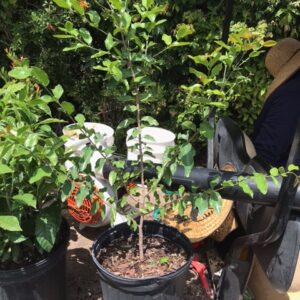General Landscape Uses: Accent shrub. Buffer plantings.
Description: Large shrub or small tree with an erect trunk and an irregular narrow crown. Trunks generally 2-3 inches in diameter. Bark smooth, pale gray. Leaves smooth, bright green, about 2-4 inches long.
Dimensions: Typically 10-15 feet in height; to 30 feet in South Florida. Taller than broad.
Growth Rate: Moderate.
Range: Monroe County Keys north to Volusia, Lake and Dixie counties; West Indies and Central America. Very rare in the upper and middle Monore County Keys.
Habitats: Moist forests, forest edges and pinelands.
Soils: Moist to seasonally wet, well-drained to poorly-drained sandy or limestone soils, with humusy top layer.
Nutritional Requirements: Moderate; can grow in nutrient poor soils, but needs some organic content to thrive.
Salt Water Tolerance: Low; does not tolerate long-term flooding by salt or brackish water.
Salt Wind Tolerance: High; can tolerate moderate amounts of salt wind without significant injury.
Drought Tolerance: Moderate; generally requires moist soils, but tolerant of short periods of drought once established.
Light Requirements: Full sun to light shade.
Flower Color: Green.
Flower Characteristics: Inconspicuous. Essentially dioecious, with male and female flowers on different plants; sometimes a few perfect flowers are present. The flowers are borne directly on the twigs from the previous year’s growth.
Flowering Season: All year; peak fall-winter.
Fruit: Blue to black berry, borne on the stems.
Horticultural Notes: Can be grown from seed after coating is removed. Scatter seeds over surface of soil and barely cover. Place container in light shade or full sun.
Comments: Miccosukee Indians used the dried leaves to mix with tobacco. Horticultural synonyms: M. floridana, Rapanea punctata.










Reviews
There are no reviews yet.